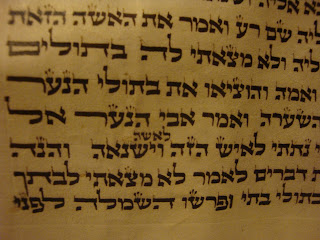Question: Are parshiyot of yad on klaf that was glued from 2 pieces, [the kadesh, vehaya and shma, where on the first klaf, and the last parsha vehaya im shamoa was written on another klaf, and later glued to the first], are they kosher lechatchila? Answer: They are kosher lechatchila. Although it is a mitzva lechatchila to try to write all 4 parshiyot on 1 klaf as written in SA and poskim, this is a mitzva lechatchila for the sofer to try to produce the best yad, but if the sofer could not write all 4 on 1 piece for any reason, then the yad is kosher lechatchila as is [after the klafim are glued as written in Rema 32:47]. There is no pgam in the hidur because it isn't on one piece. (see Mishna Berura 32:219, Mishnat Hasofer Biur Hasofer p. 236. Indeed the terms lechatchila and bdieved must be clarified, IE the oilam in general does not use these terms with the correct meaning. In our case, once the issue is bdieved for the sofer, then the parshiyos are kosher lechatchil






